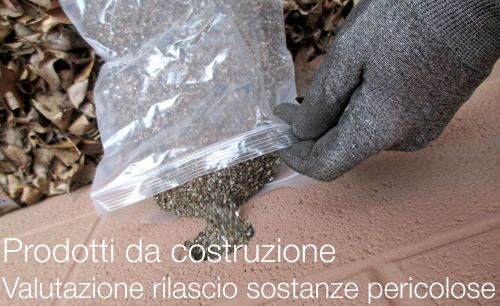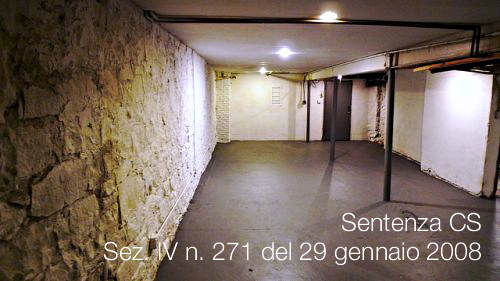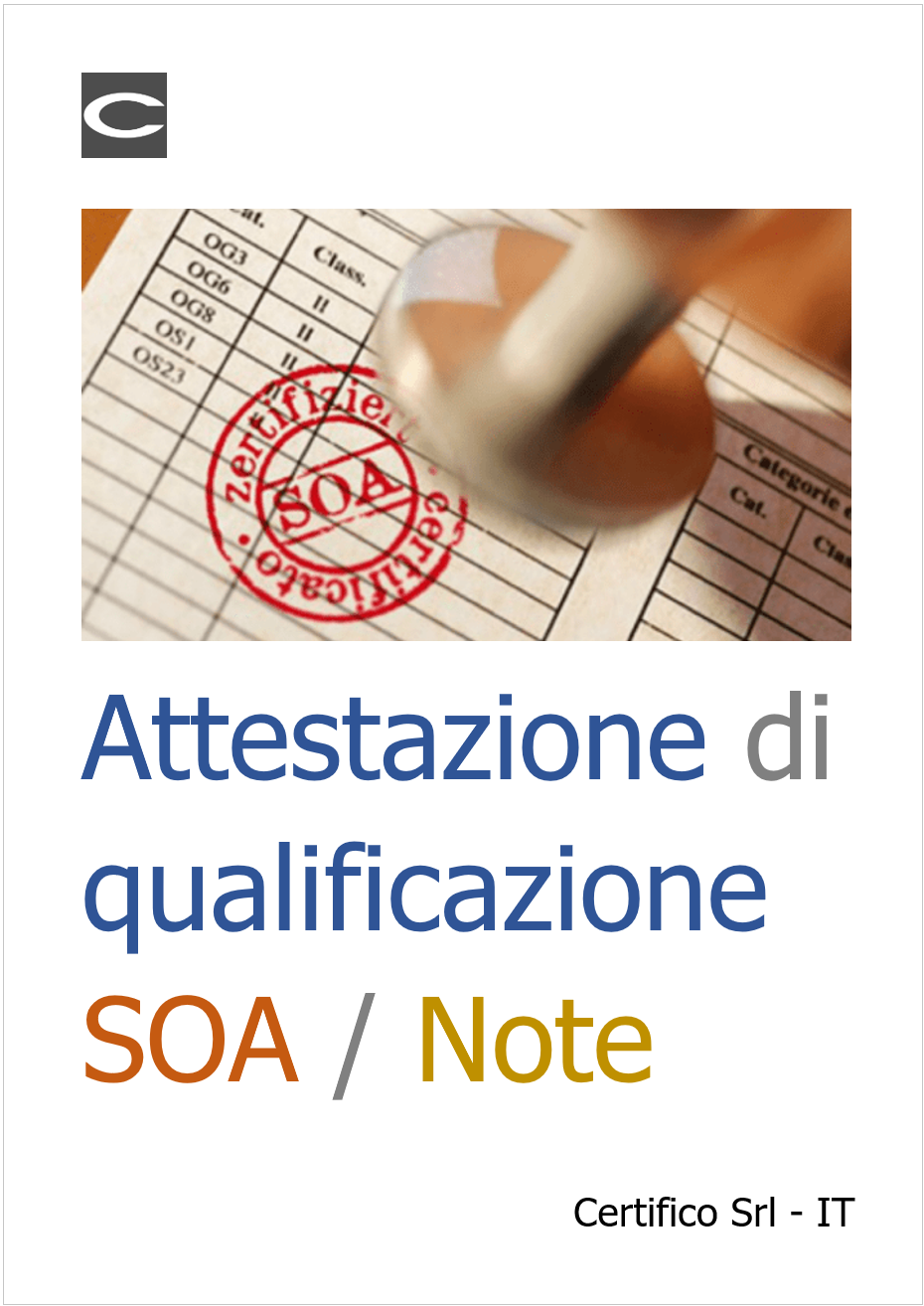Circolare Ministero delle Finanze 06 luglio 1941 n. 134
ID 21091 | 05.01.2024
Circolare Ministero delle Finanze 06 luglio 1941 n. 134 - Nuovo catasto edilizio urba...

Serie di specifiche tecniche UNI, in vigore dal 06 Settembre 2018, relative alla valutazione di rilascio di sostanze pericolose dei prodotti da costruzione e precisamente:
- UNI CEN/TS 17201:2018
- UNI CEN/TS 17200:2018
- UNI CEN/TS 17197:2018
- UNI CEN/TS 17196:2018
- UNI CEN/TS 17195:2018
In allegato Preview delle specifiche tecniche riservato Abbonati.
...
1 UNI CEN/TS 17201:2018
Prodotti da costruzione - Valutazione del rilascio di sostanze pericolose - Contenuto di sostanze inorganiche - Metodo per l'analisi delle soluzioni di acqua regia
Data entrata in vigore: 06 settembre 2018
La specifica tecnica specifica metodi analitici per la determinazione nei prodotti da costruzione degli elementi maggiori, minori e in traccia in soluzioni di acqua regia. Essa fa riferimento a 67 elementi.
http://store.uni.com/catalogo/index.php/uni-cen-ts-17201-2018.html
In allegato Preview riservato Abbonati CEN/TS 17201:2018
Construction products: Assessment of release of dangerous substances - Content of inorganic substances - Methods for analysis of aqua regia digests
This Technical Specification specifies analytical methods for the determination of major, minor and trace elements in aqua regia digests of construction products. It refers to the following 67 elements: Aluminium (Al), antimony (Sb), arsenic (As), barium (Ba), beryllium (Be), bismuth (Bi), boron (B), cadmium (Cd), calcium (Ca), cerium (Ce), cesium (Cs), chromium (Cr), cobalt (Co), copper (Cu), dysprosium (Dy), erbium (Er), europium (Eu), gadolinium (Gd), gallium (Ga), germanium (Ge), gold (Au), hafnium (Hf), holmium (Ho), indium (In), iridium (Ir), iron (Fe), lanthanum (La), lead (Pb), lithium (Li), lutetium (Lu), magnesium (Mg), manganese (Mn), mercury (Hg), molybdenum (Mo), neodymium (Nd), nickel (Ni), palladium (Pd), phosphorus (P), platinum (Pt), potassium (K), praseodymium (Pr), rubidium (Rb), rhenium (Re), rhodium (Rh), ruthenium (Ru), samarium (Sm), scandium (Sc), selenium (Se), silicon (Si), silver (Ag), sodium (Na), strontium (Sr), sulphur (S), tellurium (Te), terbium (Tb), thallium (Tl), thorium (Th), thulium (Tm), tin (Sn), titanium (Ti), tungsten (W), uranium (U), vanadium (V), ytterbium (Yb), yttrium (Y), zinc (Zn), and zirconium (Zr. The methods in this Technical Specification are applicable to construction products. NOTE Construction products include e.g. mineral-based products (S); bituminous products (B); metals (M); wood-based products (W); plastics and rubbers (P); sealants and adhesives (A); paints and coatings (C), see also CEN/TR 16045 [1]. The selection of analytical methods to be applied is based on the required sensitivity of the method, which is provided for all combinations of substance and analytical procedure.
http://store.uni.com/catalogo/index.php/cen-ts-17201-2018.html
2 UNI CEN/TS 17200:2018
Prodotti da costruzione - Valutazione del rilascio di sostanze pericolose - Analisi delle sostanze inorganiche in soluzioni ed eluati - Analisi attraverso il Plasma Accoppiato Induttivo - Spettometro di massa (ICP-MS)
Data entrata in vigore: 06 settembre 2018
La specifica tecnica specifica il metodo per la determinazione nei prodotti da costruzione degli elementi maggiori, minori e in traccia in soluzioni di acqua regia e acido nitrico e in eluati, attraverso il Plasma Accoppiato Induttivo - Spettrometro di massa (ICP-MS). Essa fa riferimento a 67 elementi.
http://store.uni.com/catalogo/index.php/uni-cen-ts-17200-2018.html
In allegato Preview CEN/TS 17200:2018 riservato abbonati
Construction products: Assessment of release of dangerous substances - Analysis of inorganic substances in digests and eluates - Analysis by Inductively Coupled Plasma - Mass Spectrometry (ICP-MS)
This Technical Specification specifies the method for the determination of major, minor and trace elements in aqua regia and nitric acid digests and in eluates of construction products by Inductively Coupled Plasma - Mass Spectrometry (ICP-MS). It refers to the following 67 elements: Aluminium (Al), antimony (Sb), arsenic (As), barium (Ba), beryllium (Be), bismuth (Bi), boron (B), cadmium (Cd), calcium (Ca), cerium (Ce), cesium (Cs), chromium (Cr), cobalt (Co), copper (Cu), dysprosium (Dy), erbium (Er), europium (Eu), gadolinium (Gd), gallium (Ga), germanium (Ge), gold (Au), hafnium (Hf), holmium (Ho), indium (In), iridium (Ir), iron (Fe), lanthanum (La), lead (Pb), lithium (Li), lutetium (Lu), magnesium (Mg), manganese (Mn), mercury (Hg), molybdenum (Mo), neodymium (Nd), nickel (Ni), palladium (Pd), phosphorus (P), platinum (Pt), potassium (K), praseodymium (Pr), rubidium (Rb), rhenium (Re), rhodium (Rh), ruthenium (Ru), samarium (Sm), scandium (Sc), selenium (Se), silicon (Si), silver (Ag), sodium (Na), strontium (Sr), sulphur (S), tellurium (Te), terbium (Tb), thallium (Tl), thorium (Th), thulium (Tm), tin (Sn), titanium (Ti), tungsten (W), uranium (U), vanadium (V), ytterbium (Yb), yttrium (Y), zinc (Zn), and zirconium (Zr).
NOTE 1 Construction products include e.g. mineral-based products (S); bituminous products (B); metals (M); wood-based products (W); plastics and rubbers (P); sealants and adhesives (A); paints and coatings (C), see also CEN/TR 16045 [1]. The working range depends on the matrix and the interferences encountered.
NOTE 2 The limit of detection of most elements will be affected by their natural abundance, ionization behaviour, on abundance of isotope(s) free from isobaric interferences and by contamination (e.g. handling and airborne). Handling contaminations are in many cases more important than airborne ones. The limit of detection will be higher in cases where the determination is likely to be interfered (see Clause 4) or in case of memory effects (see e.g. EN ISO 17294-1:2006, 8.2).
The method in this Technical Specification is applicable to construction products and validated for the product types listed in Annex B.
http://store.uni.com/catalogo/index.php/cen-ts-17200-2018.html
3 UNI CEN/TS 17197:2018
Prodotti da costruzione - Valutazione del rilascio di sostanze pericolose - Analisi delle sostanze inorganiche in soluzioni ed eluati - Analisi attraverso il Plasma Accoppiato Induttivo - Spettrometro ad Emissione Ottica (ICP-OES)
Data entrata in vigore: 06 settembre 2018
La specifica tecnica specifica il metodo per la determinazione nei prodotti da costruzione degli elementi maggiori, minori e in traccia in acqua regia e soluzioni di acido nitrico e in eluati attraverso il Plasma Accoppiato Induttivo - Spettrometro ad Emissione Ottica (ICP-OES). Essa fa riferimento a 44 elementi.
http://store.uni.com/catalogo/index.php/uni-cen-ts-17197-2018.html
In allegato Preview CEN/TS 17197:2018 riservato abbonati
Construction products: Assessment of release of dangerous substances - Analysis of inorganic substances in digests and eluates - Analysis by Inductively Coupled Plasma - Optical Emission Spectrometry (ICP-OES)
This Technical Specification specifies the method for the determination of major, minor and trace elements in aqua regia and nitric acid digests and in eluates of construction products by Inductively Coupled Plasma - Optical Emission Spectrometry (ICP-OES). It refers to the following 44 elements: Aluminium (Al), antimony (Sb), arsenic (As), barium (Ba), beryllium (Be), bismuth (Bi), boron (B), cadmium (Cd), calcium (Ca), cerium (Ce), chromium (Cr), cobalt (Co), copper (Cu), iron (Fe), lanthanum (La), lead (Pb), lithium (Li), magnesium (Mg), manganese (Mn), mercury (Hg), molybdenum (Mo), neodymium (Nd), nickel (Ni), phosphorus (P), potassium (K), praseodymium (Pr), samarium (Sm), scandium (Sc), selenium (Se), silicon (Si), silver (Ag), sodium (Na), strontium (Sr), sulphur (S), tellurium (Te), thallium (Tl), thorium (Th), tin (Sn), titanium (Ti), tungsten (W), uranium (U), vanadium (V), zinc (Zn), and zirconium (Zr). For the determination of low levels of As, Se and Sb, hydride generation may be applied. This method is described in Annex D. NOTE Construction products include e.g. mineral-based products (S); bituminous products (B); metals (M); wood-based products (W); plastics and rubbers (P); sealants and adhesives (A); paints and coatings (C), see also CEN/TR 16045 [1]. The method in this Technical Specification is applicable to construction products and validated for the product types listed in Annex D.
4 UNI CEN/TS 17196:2018
Prodotti da costruzione - Valutazione del rilascio di sostanze pericolose - Digestione attraverso acqua regia per l'analisi successiva di sostanze organiche
Data entrata in vigore : 06 settembre 2018
La specifica tecnica specifica i metodi per ottenere la digestione dei contenuti in acqua regia dei prodotti da costruzione. Le soluzioni prodotte dal presente metodo sono per l'analisi attraverso il Plasma Accoppiato Induttivo - Spettrometro di massa (ICP-MS) e lo Spettrometro Accoppiato Induttivo (ICP-OES) per 67 elementi.
http://store.uni.com/catalogo/index.php/uni-cen-ts-17196-2018.html
In allegato Preview CEN/TS 17196:2018 riservato abbonati
Construction products: Assessment of release of dangerous substances - Digestion by aqua regia for subsequent analysis of inorganic substances
This Technical Specification specifies methods for obtaining the aqua regia digestible content of construction products. Solutions produced by this method are for analysis by inductively coupled plasma mass spectrometry (ICP-MS) and inductively coupled spectrometry (ICP-OES) for the following 67 elements: Aluminium (Al), antimony (Sb), arsenic (As), barium (Ba), beryllium (Be), bismuth (Bi), boron (B), cadmium (Cd), calcium (Ca), cerium (Ce), cesium (Cs), chromium (Cr), cobalt (Co), copper (Cu), dysprosium (Dy), erbium (Er), europium (Eu), gadolinium (Gd), gallium (Ga), germanium (Ge), gold (Au), hafnium (Hf), holmium (Ho), indium (In), iridium (Ir), iron (Fe), lanthanum (La), lead (Pb), lithium (Li), lutetium (Lu), magnesium (Mg), manganese (Mn), mercury (Hg), molybdenum (Mo), neodymium (Nd), nickel (Ni), palladium (Pd), phosphorus (P), platinum (Pt), potassium (K), praseodymium (Pr), rubidium (Rb), rhenium (Re), rhodium (Rh), ruthenium (Ru), samarium (Sm), scandium (Sc), selenium (Se), silicon (Si), silver (Ag), sodium (Na), strontium (Sr), sulphur (S), tellurium (Te), terbium (Tb), thallium (Tl), thorium (Th), thulium (Tm), tin (Sn), titanium (Ti), tungsten (W), uranium (U), vanadium (V), ytterbium (Yb), yttrium (Y), zinc (Zn), and zirconium (Zr). Solutions produced by the methods are suitable for analysis by cold vapour atomic absorption or fluorescent spectrometry (CV-AAS, CV-AFS), for mercury (Hg). The method in this Technical Specification is applicable to construction products. Digestion with aqua regia will not necessarily accomplish total decomposition of the sample. The extracted analyte concentrations may not necessarily reflect the total content in the sample. NOTE Construction products include e.g. mineral-based products (S); bituminous products (B); metals (M); wood-based products (W); plastics and rubbers (P); sealants and adhesives (A); paints and coatings (C), see also CEN/TR 16045.
...
5 UNI CEN/TS 17195:2018
Prodotti da costruzione - Valutazione del rilascio di sostanze pericolose - Analisi delle sostanze inorganiche in eluati
Data entrata in vigore: 06 settembre 2018
La specifica tecnica specifica metodi analitici per la determinazione nei prodotti da costruzione degli elementi maggiori, minori e in traccia e degli anioni in eluati acquosi. Essa fa riferimento a 67 elementi.
http://store.uni.com/catalogo/index.php/uni-cen-ts-17195-2018.html
In allegato Preview CEN/TS 17195:2018 riservato abbonati
Construction products: Assessment of release of dangerous substances - Analysis of inorganic substances in eluates
This Technical Specification specifies analytical methods for the determination of major, minor and trace elements and of anions in aqueous eluates from construction products. It refers to the following 67 elements: Aluminium (Al), antimony (Sb), arsenic (As), barium (Ba), beryllium (Be), bismuth (Bi), boron (B), cadmium (Cd), calcium (Ca), cerium (Ce), cesium (Cs), chromium (Cr), cobalt (Co), copper (Cu), dysprosium (Dy), erbium (Er), europium (Eu), gadolinium (Gd), gallium (Ga), germanium (Ge), gold (Au), hafnium (Hf), holmium (Ho), indium (In), iridium (Ir), iron (Fe), lanthanum (La), lead (Pb), lithium (Li), lutetium (Lu), magnesium (Mg), manganese (Mn), mercury (Hg), molybdenum (Mo), neodymium (Nd), nickel (Ni), palladium (Pd), phosphorus (P), platinum (Pt), potassium (K), praseodymium (Pr), rubidium (Rb), rhenium (Re), rhodium (Rh), ruthenium (Ru), samarium (Sm), scandium (Sc), selenium (Se), silicon (Si), silver (Ag), sodium (Na), strontium (Sr), sulphur (S), tellurium (Te), terbium (Tb), thallium (Tl), thorium (Th), thulium (Tm), tin (Sn), titanium (Ti), tungsten (W), uranium (U), vanadium (V), ytterbium (Yb), yttrium (Y), zinc (Zn), and zirconium (Zr) and to the following four anions: Cl-, Br-, F-, SO42-. The Technical Specification also describes how to measure general parameters like pH, electrical conductivity, DOC/TOC. The methods in this Technical Specification are applicable to construction products. NOTE Construction products include e.g. mineral-based products (S); bituminous products (B); metals (M); wood-based products (W); plastics and rubbers (P); sealants and adhesives (A); paints and coatings (C), see also CEN/TR 16045. The selection of analytical methods to be applied is based on the required sensitivity of the method, which is provided for all substance - analytical procedure combinations.
...
Fonte: UNI
EVS
ID 21091 | 05.01.2024
Circolare Ministero delle Finanze 06 luglio 1941 n. 134 - Nuovo catasto edilizio urba...

Un seminterrato è tale, se in ogni sua parte rimane al di sotto del piano di campagna o del livello zero di sbancamento, essendo compatibile con tale situ...

ID 22596 | 26.09.2024 / In allegato Note complete
SOA è acronimo di "Società Organismo di Attestazione" l’omonima attestazione che ta...
Testata editoriale iscritta al n. 22/2024 del registro periodici della cancelleria del Tribunale di Perugia in data 19.11.2024